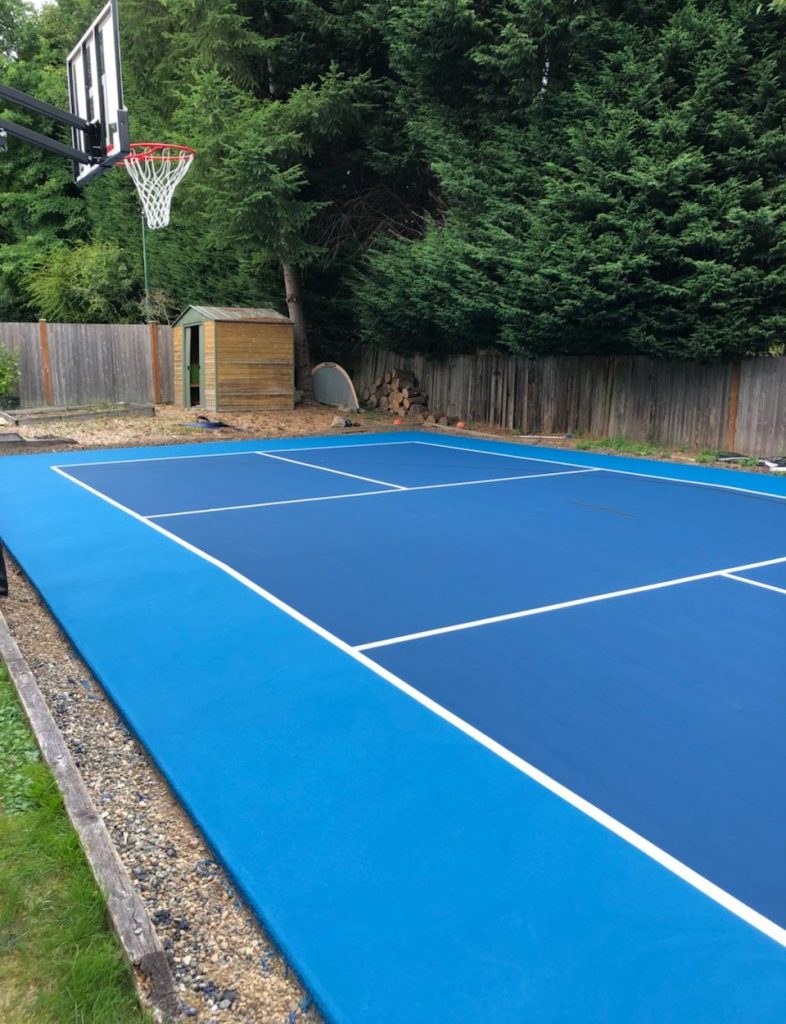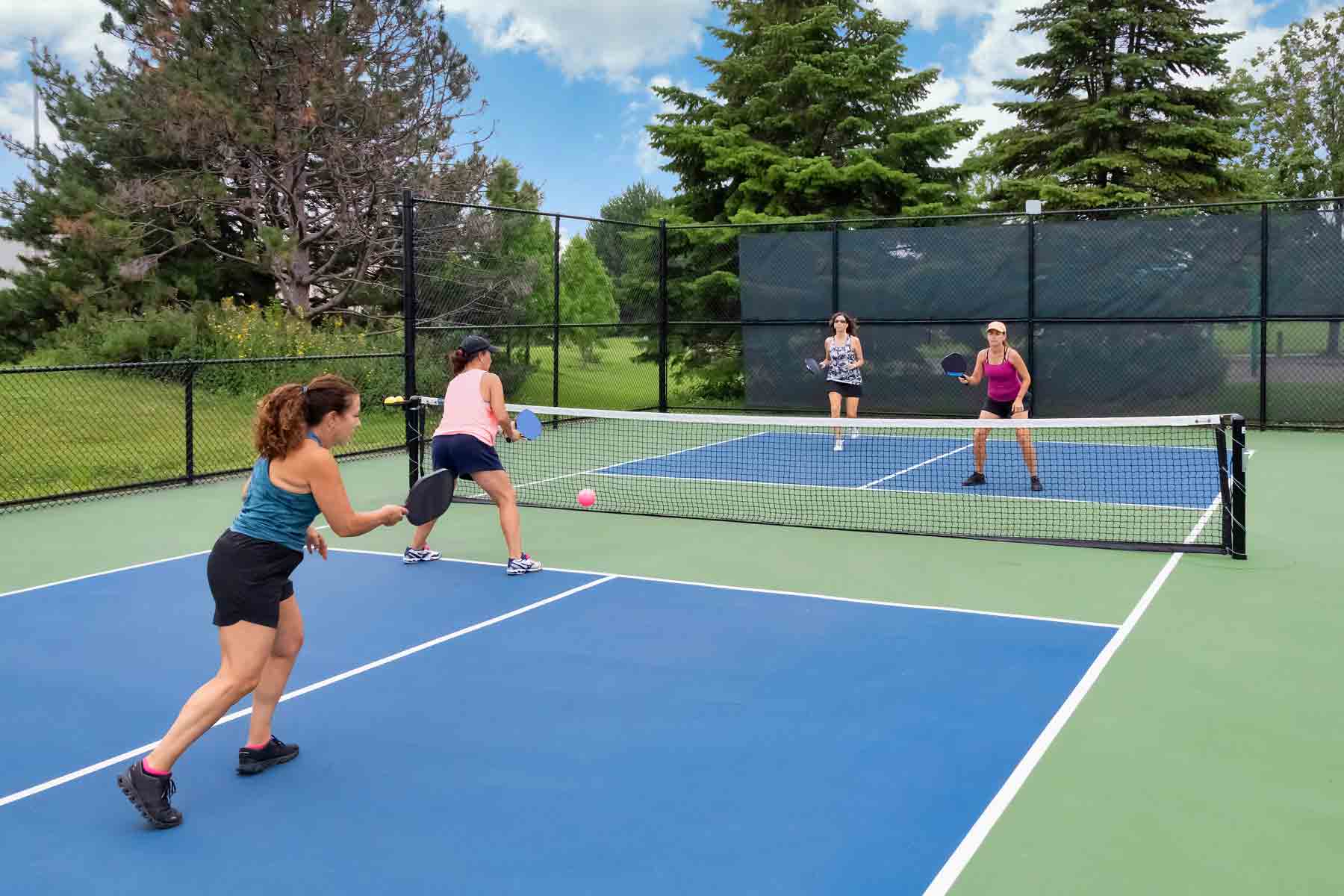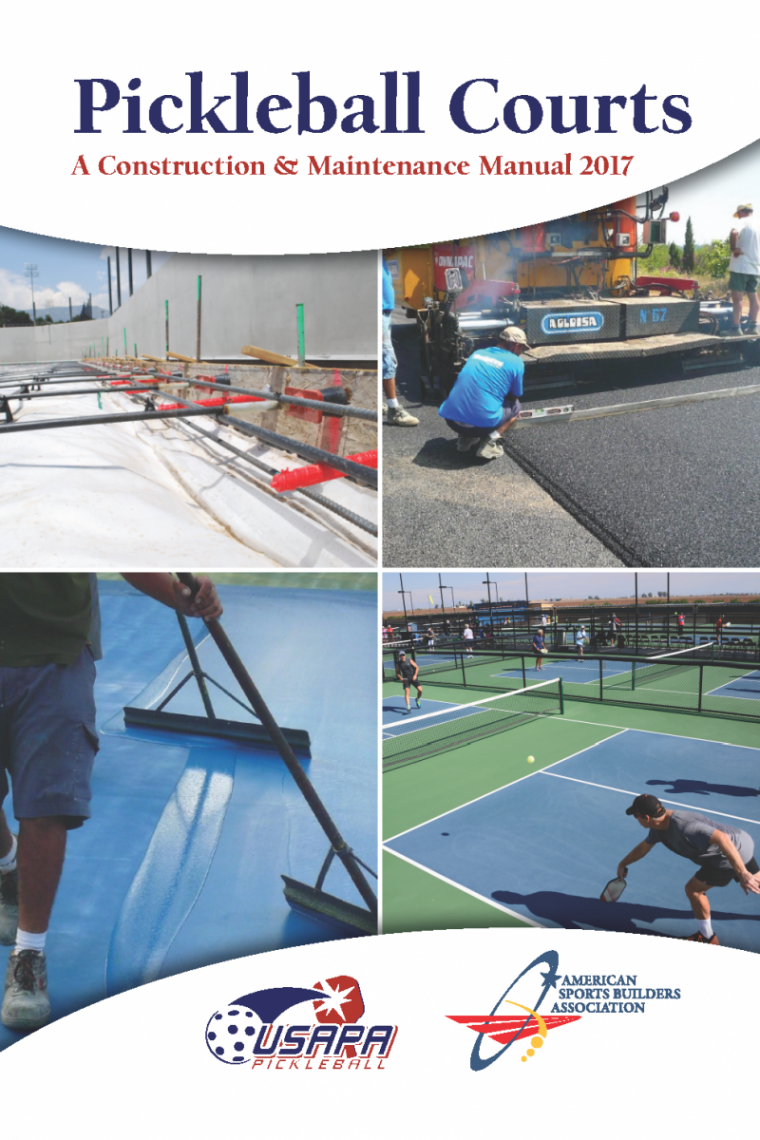A Comprehensive Guide to Creating the Perfect Pickleball Court for All Skill Degrees
Designing a pickleball court that deals with gamers of varying ability levels requires a multifaceted technique, including vital aspects such as court dimensions, surface area materials, and ease of access functions. The equilibrium between performance and safety and security is vital, as is the creation of a welcoming setting for both spectators and participants. With the best design selections, one can foster an interesting environment that advertises pleasure and skill growth. Pickleball court contractor. Nevertheless, the intricacies involved in attaining this balance are typically forgotten. What specific factors to consider must be prioritized to make certain a successful implementation?

Recognizing Court Capacities
Recognizing the measurements of a pickleball court is vital for both players and designers, as these specifications make sure a regular and fair playing experience. A common pickleball court determines 20 feet broad by 44 feet long for both singles and doubles play. The court is separated into 2 equal halves by a web that stands 36 inches high at the sidelines and 34 inches at the facility.
Trick attributes of the court consist of the non-volley area, typically referred to as the "kitchen," which prolongs 7 feet from the web on both sides. This location is critical for managing player activity and volleying, guaranteeing strategic play. Additionally, the service areas on each side of the court are important, measuring 10 feet broad and 15 feet deep, made to accommodate proper offering methods.
Bordering the court, an area of a minimum of 10 feet must be designated as the security zone, enabling gamers ample area to relocate and prevent injuries during play. Sticking to these measurements not only cultivates fair competitors but likewise promotes safety and security and pleasure for all individuals, making it important for any pickleball court layout.
Selecting the Right Surface Area
The selection of playing surface area for a pickleball court considerably affects the video game's characteristics and player experience. Picking the ideal product is critical for making certain gamer security, comfort, and performance. Usual surface areas include asphalt, concrete, and specialized sporting activities floor covering.
Asphalt is a prominent selection due to its price and resilience. It provides a consistent having fun surface area but can be difficult on joints over expanded play. Concrete, while comparable in durability, provides marginal adaptability, possibly leading to enhanced influence on players' bodies.
For an extra cushioned experience, lots of facilities select specialized sports flooring, such as modular ceramic tiles or artificial surfaces. These products typically include shock-absorbing homes, decreasing the risk of injuries and enhancing player comfort. Furthermore, such surface areas can enhance round bounce uniformity, which is crucial for fair play.
When selecting a surface, take into consideration aspects such as climate, maintenance requirements, and the strength of play. An appropriate surface area not just enhances gameplay yet also adds to the durability of the court itself. Ultimately, understanding the nuances of different materials will aid in producing an optimum pickleball environment tailored to various skill levels.
Ideal Court Design
An optimum court layout is necessary for taking full advantage of both player performance and viewer pleasure in pickleball. The dimensions of a basic pickleball court are 20 feet wide by 44 feet long for increases play, preserving a clear boundary that enhances gameplay. The web, positioned at 36 inches high at the sidelines and 34 inches in the facility, is critical for preserving the characteristics of the see it here video game.
Integrating assigned areas around the court for players to relocate freely is essential. A minimum of 10 feet of clearance on all sides of the court is advised to avoid collisions and give area for spectators. Additionally, alignment plays a substantial function; the court should preferably be aligned north-south to decrease the impact of sunlight glare on gamers throughout top hours.
Noticeable and clear court markings aid in gameplay, with contrasting shades for borders and non-volley zones that delineate crucial areas for gamers. In general, a well-designed court layout cultivates an appealing atmosphere for both viewers and gamers.

Accessibility Factors To Consider
When designing a pickleball court, ensuring availability for all players, including those with impairments, is critical. An attentively designed court can promote inclusivity and urge participation from individuals of differing capacities.

Gain access to courses to the court should additionally be meticulously prepared. Make certain that pathways leading to the court are broad sufficient for wheelchair individuals and are furnished with ramps where needed. Signage should be big and clear enough to be quickly checked out.
Additionally, seating areas ought to be made to permit easy access to and from the court. This includes providing designated areas for viewers who may have flexibility obstacles.
Last but not least, guarantee that bathroom facilities neighboring satisfy access requirements. By considering these elements, you can develop a pickleball court that rates and usable for every person, therefore promoting a vivid and diverse area of players.
Upkeep and Maintenance
Appropriate upkeep and maintenance of a pickleball court are vital for guaranteeing optimum having fun conditions and lengthening the lifespan of the center. Regular assessments should be performed to determine and address any type of problems or wear, such as fractures in the surface area or loose netting. These problems, if left neglected, can adversely influence gameplay and safety.
Surface maintenance is important; courts need to be cleansed regularly to get rid of particles, leaves, or dirt that can impact grip. For tough courts, routine stress cleaning is advised to keep surface area honesty and aesthetic appeals. If your court is made from softer materials, such as asphalt, resurfacing or securing may be required to safeguard against weather-related wear.
In addition, web height and stress must be examined consistently, as incorrect settings can change gameplay. Maintaining bordering locations, including fencing and lights, is just as crucial for making sure a risk-free and pleasurable environment.
Verdict
To conclude, the design of a perfect pickleball court demands a precise strategy that includes appropriate measurements, appropriate surface area materials, and thoughtful design. Pickleball court contractor. Ensuring ease of access for all gamers and spectators is essential for cultivating a comprehensive environment. Regular maintenance is necessary for sustaining court quality and safety. By adhering to these guidelines, the perfect pickleball court can be created, promoting pleasure and athletic growth for gamers of differing ability degrees.
Designing a pickleball court that provides to players of differing ability levels demands a diverse approach, including vital aspects such as court dimensions, surface area materials, and access functions.Understanding the measurements of a pickleball court is essential for both players and developers, as these specifications make sure a constant and reasonable playing experience.The selection of playing surface for a pickleball court considerably affects the game's characteristics and player experience.An ideal court design is crucial for making the most of both gamer efficiency and viewer enjoyment in pickleball. By adhering to these click guidelines, the perfect pickleball court can be created, advertising satisfaction and athletic advancement for players of varying ability degrees.